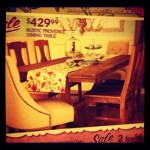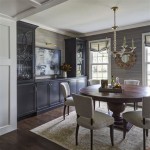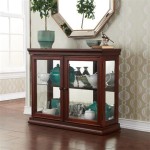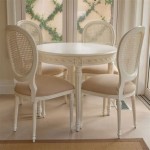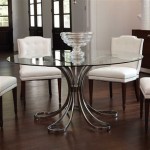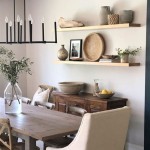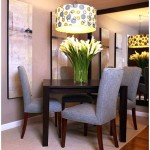Built-In Dining Room Storage: Maximizing Space and Enhancing Style
The dining room, traditionally a space dedicated to shared meals and social gatherings, often benefits significantly from thoughtful and integrated storage solutions. Built-in dining room storage offers a seamless blend of functionality and aesthetics, transforming a potentially cluttered area into an organized and visually appealing environment. By incorporating storage directly into the room's architecture, homeowners can optimize space utilization, maintain a tidy atmosphere, and enhance the overall design scheme.
Unlike freestanding furniture, built-in storage is customized to fit the specific dimensions and needs of the dining room. This allows for efficient use of every available inch, even in challenging or unusually shaped spaces. From shelving units to cabinets and drawers, the possibilities for built-in storage are vast and adaptable to various styles and storage requirements. This article will explore the advantages of built-in dining room storage, delve into different design considerations, and examine various types of built-in solutions that can enhance both the practicality and the aesthetic appeal of the dining area.
Advantages of Built-In Dining Room Storage
One of the primary benefits of built-in storage is its ability to maximize space. Freestanding furniture, while offering storage, often occupies valuable floor space and can make a room feel cramped. Built-in units, on the other hand, are integrated into the walls, utilizing vertical space and minimizing the footprint on the floor. This is particularly advantageous in smaller dining rooms where every square foot counts.
Another significant advantage is customization. Built-in storage can be designed to accommodate specific storage needs, from storing fine china and serving dishes to linens, silverware, and even barware. The interior configuration can be tailored with adjustable shelves, drawers, wine racks, and other specialized compartments to optimize organization and accessibility. This bespoke approach ensures that every item has a designated place, minimizing clutter and streamlining meal preparation and serving.
Furthermore, built-in storage contributes to a cohesive and integrated design aesthetic. By seamlessly blending with the room's architecture, these units create a sense of visual harmony and sophistication. The materials, finishes, and hardware can be carefully selected to complement the existing decor, ensuring that the storage solution enhances rather than detracts from the overall style of the dining room. This can lead to a more polished and refined look compared to using mismatched freestanding furniture.
Design Considerations for Built-In Dining Room Storage
Before embarking on a built-in storage project, several design considerations require careful attention. The first is assessing storage needs. It is crucial to inventory the items that will be stored in the dining room and determine the most efficient way to organize them. This involves considering the size, shape, and frequency of use of each item. For example, delicate glassware and fine china may require specialized shelving or padded compartments, while linens may benefit from drawers or baskets.
The second consideration is the overall style and architecture of the dining room. The design of the built-in storage should complement the existing aesthetic, whether it is traditional, modern, contemporary, or eclectic. This involves selecting appropriate materials, finishes, and hardware that harmonize with the room's color palette, architectural details, and existing furniture. For instance, in a traditional dining room, ornate molding, raised panel doors, and antique brass hardware may be suitable choices, while a modern dining room might call for sleek, minimalist lines, flat-panel doors, and brushed metal hardware.
Third, the placement and configuration of the built-in storage should be carefully planned to optimize functionality and traffic flow. The units should be positioned in a way that does not obstruct pathways or interfere with the use of the dining table and chairs. Consider incorporating features such as lighting, electrical outlets, and display areas to enhance the functionality and aesthetic appeal of the storage solution. For example, built-in lighting can illuminate shelves and highlight displayed items, while electrical outlets can power appliances such as buffet servers or wine refrigerators.
Finally, consider the budget allocated for the project. Built-in storage can range in price depending on the materials used, the complexity of the design, and the labor involved in installation. Obtaining quotes from multiple contractors and carefully reviewing the specifications can help ensure that the project stays within budget without compromising on quality or functionality. It is also important to factor in the cost of hardware, lighting, and any necessary electrical work.
Types of Built-In Dining Room Storage Solutions
There are various types of built-in storage solutions suitable for dining rooms, each offering unique advantages and catering to different storage needs. One common type is shelving units. Built-in shelves can provide ample space for displaying decorative items, storing books, or showcasing collections of china and glassware. Adjustable shelves allow for flexibility in accommodating items of varying sizes, while fixed shelves can provide a more structured and organized look. Shelving units can be incorporated into alcoves, niches, or entire walls to create a dramatic and functional focal point.
Another popular option is built-in cabinets. Cabinets offer concealed storage for items that are not intended for display, such as linens, silverware, serving dishes, and barware. Cabinets can be designed with doors, drawers, or a combination of both, depending on the items being stored. Glass-front cabinets are a versatile option that allows for both display and concealment, providing a glimpse of the stored items while keeping them protected from dust and damage. Cabinets can be integrated into the lower portion of a wall or extended to the ceiling to maximize storage capacity.
A third type of built-in storage solution is a buffet or sideboard. Built-in buffets provide a spacious surface for serving food and drinks during gatherings, as well as ample storage underneath for dishes, serving utensils, and other dining essentials. Buffets can be designed with drawers for storing silverware and napkins, cabinets for storing larger items, and open shelving for displaying decorative objects. A built-in buffet can serve as a stylish and functional centerpiece for the dining room, enhancing both its beauty and its practicality.
A further option is the integration of a wine rack into the built-in storage design. For wine enthusiasts, incorporating a wine rack into the built-in storage can be a stylish and practical way to store and display their collection. Wine racks can be designed to accommodate bottles of varying sizes and shapes, and can be incorporated into shelving units, cabinets, or even customized niches. Wine racks can also be equipped with features such as temperature control and lighting to create an optimal environment for wine storage.
Finally, a less common but highly functional option is a built-in banquette with integrated storage. This type of solution is particularly useful in dining areas with limited space. The banquette seating provides comfortable seating, while the space underneath the seat can be used for storing items such as table linens, placemats, or even infrequently used serving dishes. This maximizes space utilization and provides a discreet storage solution that blends seamlessly with the dining room decor.
Ultimately, the choice of built-in dining room storage solutions depends on individual needs, preferences, and the existing architecture of the space. By carefully considering these factors and working with a skilled designer or contractor, homeowners can create a functional and aesthetically pleasing dining room that maximizes space, enhances organization, and elevates the overall dining experience.

Ideas For Dining Room Built Ins Marissa Cal Home

Stylish Dining Room Storage Ideas
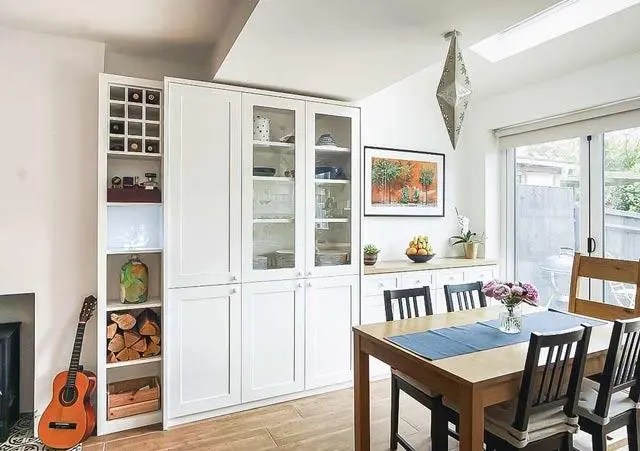
Cupboards Built In Solutions

30 Best Dining Room Storage Ideas To Add More Style

Dining Room Built In Bench Design Ideas

Ideas For Dining Room Built Ins Marissa Cal Home

Jen S Dining Room Built Ins Part 1

Trending Dining Room Built Ins Nikki S Plate

Fitted Dining Room Storage Furniture

Taupe Dining Room Built Ins Design Ideas

